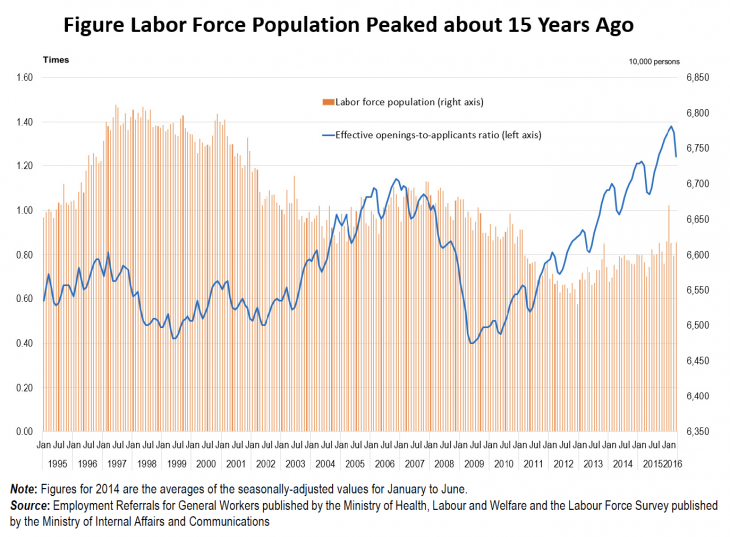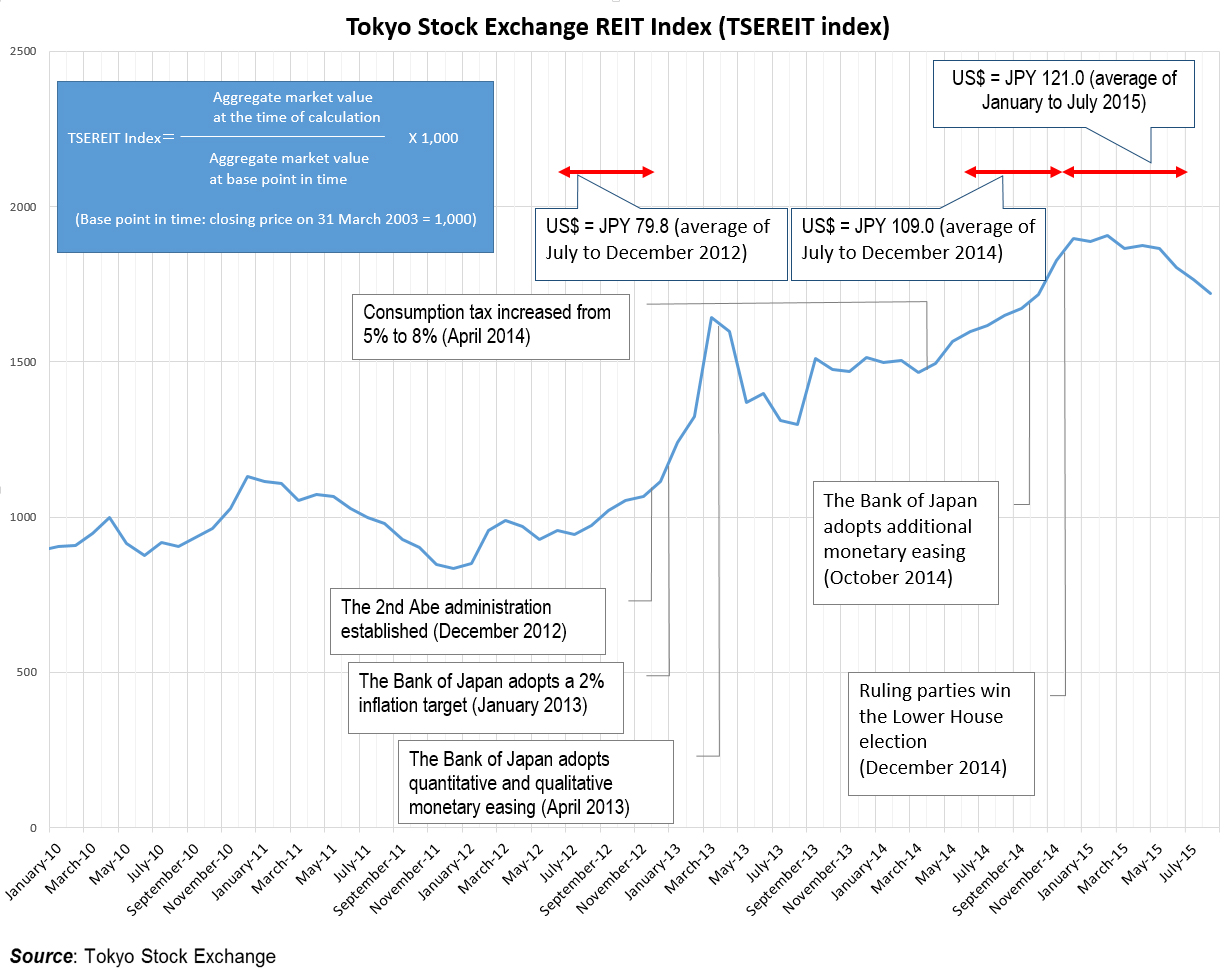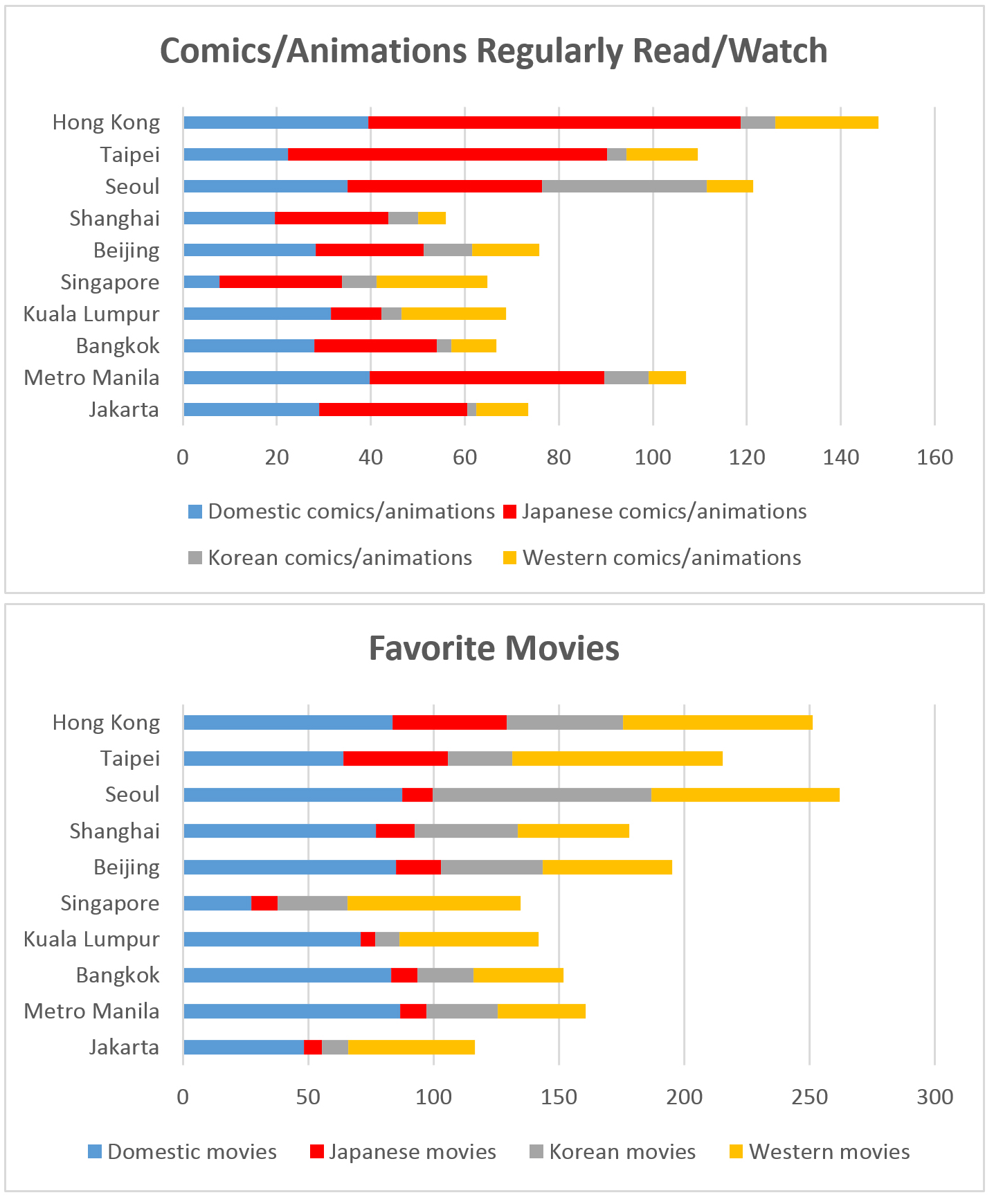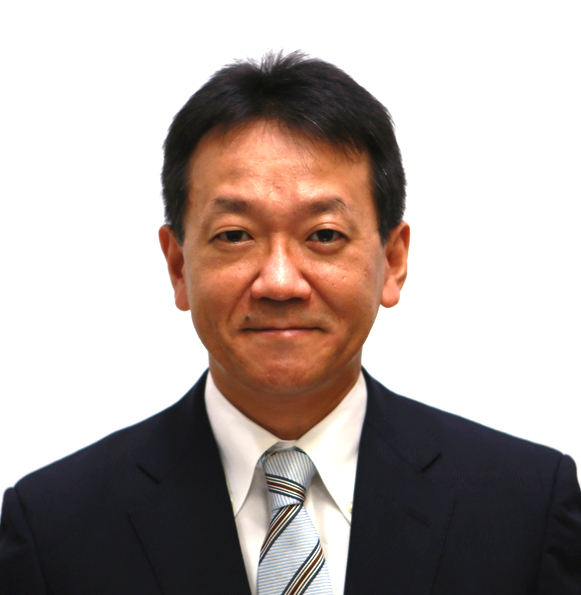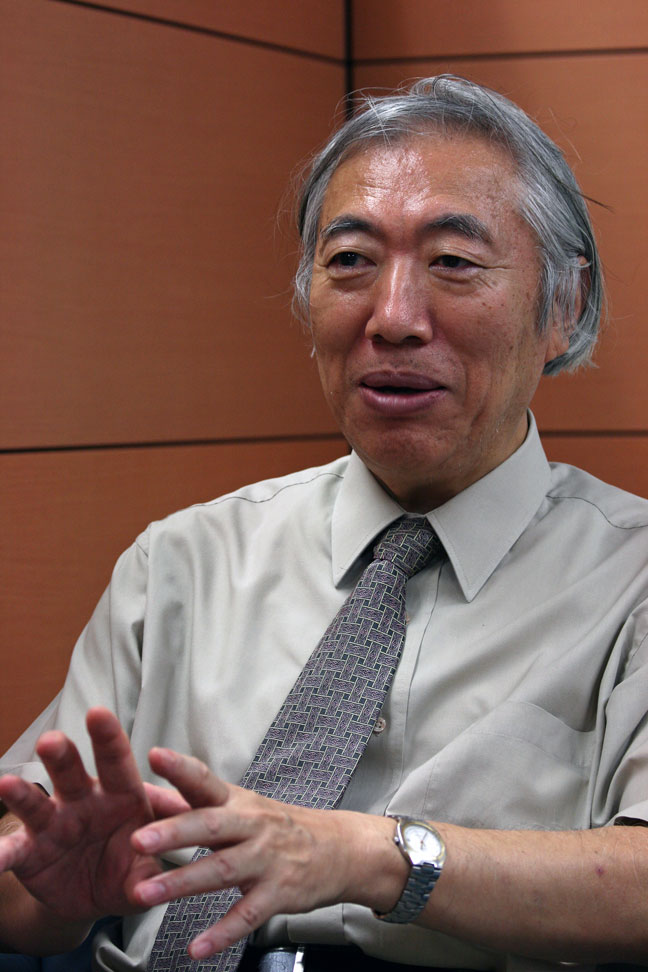Will Japan’s Labor Shortage Worsen?Overstaffing May Resurface If Problems Are Left Unaddressed
An examination of the causes of Japan’s current labor shortage reveals that it is too early to conclude that a society with a shrinking population directly causes the problem to worsen.

YAMADA Hisashi, Chief Economist, Head of Economics Department, the Japan Research Institute, Ltd.
The shrinking population has been identified as an underlying factor to Japan’s rising labor shortage in recent years. However, Japan’s labor force population (the combined population of employed and unemployed people aged 15 or older actively seeking full-time work) reached its peak nearly fifteen years ago. This fact indicates that even though the labor supply is shrinking, a surplus of personnel was considered to be a problem up until a little more than a year ago.
The quick turn in the labor situation is a direct result of changes in economic conditions. Until recently, the Japanese economy was still stagnant, the drop in the demand for labor was outpacing the decrease in the labor supply, and there was an ongoing surplus of personnel. But as Japan’s economy headed towards recovery, the rising demand for labor brought the labor shortage problem to the surface.
Another point worth noting is the continued impact of the sluggish value-added productivity of companies. There was a particularly sharp downward shift in this productivity level after the Lehman shock. A drop in the value-added productivity means the amount of work needed to achieve the same level of added value increases in proportion to the decline. As a result, labor shortages become much more prominent as the required amount of work increases when the demand for labor begins to recover.
Underlying causes of Japan’s labor shortage
One point that needs to be noted here is that the current labor shortages are not occurring in the same way throughout the Japanese economy. Labor shortages are especially evident in the areas of construction, transportation, commerce, and services aimed at individuals. Value-added productivity has remained low in many of these fields. There is also a strong tendency for labor to be in short supply in fields with less than favorable wages and other working conditions. They are two sides of the same coin.
In short, business fields in which labor shortages have been felt strongly are those which adopted a business model focusing on “low-margin high-turnover.” The assumption for this model was an excess supply of cheap labor in periods of relaxed labor demand. One typical example of this pattern is the deflation-driven competition in the food service industry. Labor flows out to other industries and labor shortages increase as supply and demand in the labor market tighten in connection with the stabilizing trend towards economic recovery. This scenario still exists.
Another factor that needs to be considered is the heightened aggravation of labor shortages as a result of the mismatches in employment opportunities. The mismatch between the qualifications and conditions sought by companies and the abilities and preferences of job seekers have caused the equilibrium unemployment rate to remain high at around 3.5%.
The high equilibrium unemployment rate indicates there must be some reason for the emergence of unemployed persons, even though the number of job openings is essentially equal to the number of unemployed persons (the condition in which supply and demand on the labor market are in balance). Currently, the equilibrium unemployment rate is 1% higher than the level it was at in the mid-1990s. This means the labor force companies can actually use has shrunk and labor shortages have grown by 1%.
The nature of the Japanese-style employment system, in which workers choose a company instead of a job, is one of the contributing factors to this problem. The employment system does not produce many individuals with professional skills who are able to work well at other companies. It also prevents women and elderly people from putting their abilities to practical use because workers are expected to work long hours.
Can Japan change its industrial structure?
The Japanese economy is expected to continue its recovery for the next few years, supported by greater corporate capital investment in response to the correction of the strong yen and past economic trends. If developments progress favorably, the business expansion phase will continue and labor will remain in short supply in Japan until around the Tokyo Olympics in 2020. However, what will happen after that point largely depends on the extent to which Japan can change its domestic industrial structure.
In the first scenario, the existence of labor shortages will be viewed as a good opportunity to change business structures, leading to progress in efforts to change business models and reorganize business structures. The key in this scenario will be the ability of companies to expand their overseas operations and build a growth model that links these operations with their domestic business growth. Labor will remain in short supply in the midst of sustained growth if changes are made to the Japanese-style employment system, in which workers choose companies instead of jobs, while at the same time eliminating mismatches in employment opportunities by reinforcing the external labor market functions at the same time. These labor shortages are not necessarily bad because they will promote a shift in personnel from low-profit to high-profit divisions, and this shift will sustain growth. We will see the emergence of this kind of scenario in the future.
In the meantime, the symptomatic treatment of labor shortages, including the facile acceptance of foreign labor, will come to the fore in another scenario at the opposite end of the spectrum. In this second scenario, the domestic industrial structure, including the non-manufacturing sector, will be left unaddressed because of the inability to secure workers. Companies will only make efforts to expand their operations overseas. From a macroeconomic perspective, overstaffing will resurface when the economy enters another stagnant period in the 2020s. The failure to address mismatches in employment opportunities will further aggravate this scenario, causing the coexistence of understaffed and overstaffed fields to become more pronounced on the microeconomic level.
Translated from “Tokoton kangaeru jinkogen ― Donaru Nippon part 6: Hitodebusoku wa shinkokuka suru? ― Kadai hochi nara futatabi jininkajo-sokumen mo (Getting to the Bottom of Japan’s Shrinking Population―What Will Happen to Japan? – Part 6: Will Japan’s Labor Shortage Worsen? ― Overstaffing May Resurface If Problems Are Left Unaddressed),” Weekly Economist, 2 September 2014, pp. 40–41 (Courtesy of Mainichi Shimbunsha).
